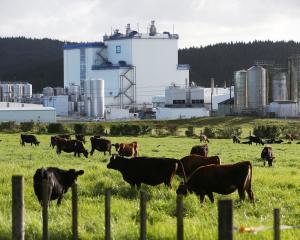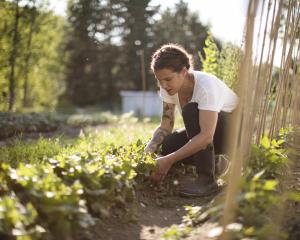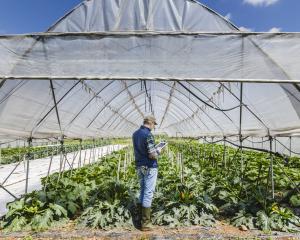What is the link between food and greenhouse gas (GHG) emissions, Sean Connelly asks.
Each step of the food system, from production, processing and packaging, transportation, retail and consumption and through to waste, contributes to climate change.

Taken together, the food system is estimated to contribute about 20-33% of our total emissions.
Agricultural production alone accounts for 14% of total global GHG emissions.
In New Zealand, agricultural production is the single largest contributor to climate change, accounting for 48% of our emissions.
The bulk of those emissions is directly related to the methane produced by the digestive systems of livestock and the fertilisers we put on our pastures to keep our livestock fed.
It is more difficult to account for the GHG emissions from other aspects of the food system.
However, given that food is the world's biggest economic sector we can assume that a significant portion of our energy, transport and industrial emissions are in some way food-related.
Studies in the European Union have estimated the food processing and packaging industry accounts for roughly 10% of total emissions, food transport 6% and retail about 2%.
Keeping food refrigerated as it moves through the food system has been estimated to account for another 3% of global GHG emissions.
Food waste was estimated to account for an additional 3% of emissions.
So what should be done? As the largest contributor to GHGs, limiting or reducing the size of our livestock herd would have the greatest impact on reducing our national GHG emissions. It would have the added benefit of addressing concerns about water quality in our rivers and streams.
Including the agricultural sector as part of the national emissions trading scheme would be a good start and reward farmers who have taken steps to reduce their emissions.
Consuming less meat and dairy would reduce our individual contribution to GHG.
If we all committed to smaller portion sizes, less meat and dairy, or became vegetarian or vegan we would make a considerable contribution to cutting emissions. We would also be healthier and have more disposable income to spend on other activities.
However, as co-founder of Transition Towns movement Rob Hopkins says, ''if we wait for government it will be too late. If we act as individuals, it will be too little. If we act as communities, it might be just enough, just in time.''
By focusing on our local food system, we can make collective commitments to reducing our food-related GHG emissions.
Reducing the steps between production and consumption reduces the amount of processing, packaging, transportation and waste involved.
It can also lead to a greater appreciation for food and where it comes from, shifting not only our diets but also our thinking, from food simply as a commodity, towards something that is treasured and celebrated.
It has been demonstrated that greater awareness of food can help address obesity and diabetes through healthier diets.
Localised food systems can also keep more money circulating in the local economy.
More importantly, localised food systems provide the opportunities for us all to work in partnership as farmers, retailers and consumers to collectively develop the kind of food system we want, one that is more climate-friendly and more just for consumers and for producers.
• Sean Connelly is a lecturer in the University of Otago department of geography.












